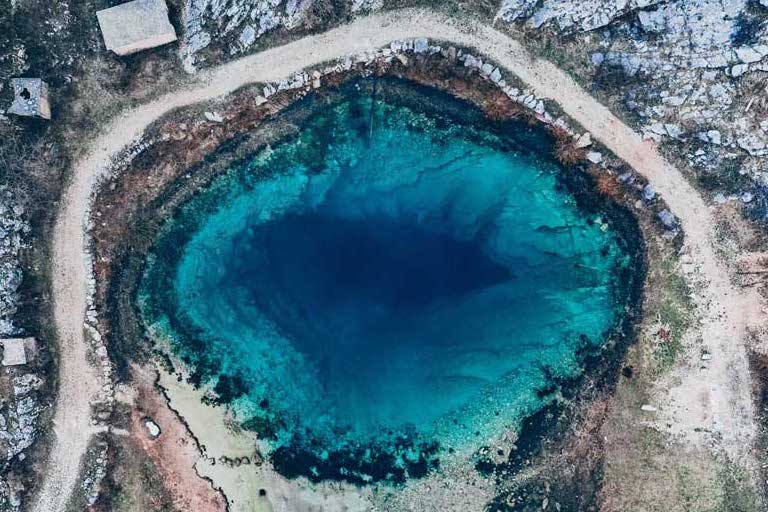Have you ever gazed at a satellite image of Earth and marveled at the intricate details, the swirling clouds, and the vibrant patchwork of land and water? It’s like peering through a giant, celestial lens, capturing a breathtaking snapshot of our world. This “Earth’s eye” view, provided by technology and human ingenuity, not only offers stunning visuals but also unveils crucial insights into our planet’s health, its complex systems, and the impact of human activity.

Image: www.pinterest.com
The concept of “Earth’s eye” encompasses various technologies and approaches that allow us to observe and analyze our planet from a global perspective. From the humble beginnings of aerial photography to the sophisticated sensors and satellites orbiting our planet today, this perspective has revolutionized our understanding of Earth and its interconnectedness. This article dives into the fascinating world of Earth observation, exploring its history, its applications, and its profound significance in shaping our future.
A Historical Glimpse: From Balloons to Satellites
The human fascination with observing Earth from above dates back to the 18th century when hot air balloons provided the first aerial perspectives. During World War I, aerial reconnaissance played a critical role, highlighting the military advantage of obtaining information from above. After the war, aerial photography flourished, transforming fields like cartography, geology, and urban planning.
The advent of the Space Age in the 1950s marked a watershed moment. The launch of Sputnik 1, the first artificial satellite, ushered in an era of continuous Earth observation. Early satellites captured simple images, but advancements in technology led to more sophisticated sensors able to measure various parameters like vegetation health, atmospheric conditions, and ocean surface temperatures.
The Earth’s Eye Toolkit: A Diverse Array of Sensors
Modern Earth observation relies on a diverse toolkit of sensors, each with specialized capabilities for studying different aspects of our planet. These instruments collectively provide a comprehensive understanding of Earth’s complexities:
- Optical Sensors: Capture visible light images, similar to traditional cameras, providing information about land cover, vegetation, and urban development. Landsat, Sentinel, and MODIS are examples of prominent optical sensor missions.
- Infrared Sensors: Detect heat radiation, allowing us to monitor temperature variations, volcanic activity, and the health of ecosystems. Geostationary satellites, like GOES and Himawari, use infrared sensors to track weather systems and provide real-time warnings.
- Radar Sensors: Emit microwave signals that penetrate clouds and can see through foliage, making them ideal for mapping topography, monitoring deforestation, and tracking natural disasters like hurricanes.
- LiDAR (Light Detection and Ranging): Emits laser pulses to measure distances, creating highly detailed 3D maps of terrain, forests, and urban areas. LiDAR data is crucial for urban planning, infrastructure development, and environmental monitoring.
Seeing Earth’s Pulse: Applications and Impacts
The data collected from “Earth’s eye” technologies has countless applications across numerous fields, significantly impacting our society and our understanding of the planet:

Image: thebalkanstravelbeauty.com
Environmental Monitoring and Climate Change
Earth observation plays a vital role in monitoring climate change and its effects. Satellite data helps scientists track changes in sea level, glaciers, and ice caps, providing evidence of global warming. It also assists in understanding the dynamics of deforestation, greenhouse gas emissions, and the health of ecosystems.
Disaster Management and Response
Earth observation technologies are indispensable during natural disasters. Satellite imagery provides rapid assessments of damage caused by earthquakes, floods, hurricanes, and wildfires. This information enables emergency responders to prioritize rescue efforts, allocate resources effectively, and provide humanitarian aid.
Agriculture and Food Security
Farmers leverage Earth observation to optimize their practices. Satellite data allows them to monitor crop health, identify areas requiring irrigation, and assess potential pest outbreaks. This information helps enhance crop yields, improve food security, and minimize resource usage.
Urban Planning and Development
Earth observation data provides valuable information for urban planning and development. Satellite images help identify areas suitable for housing, infrastructure development, and transportation networks. This information optimizes urban growth, minimizes environmental impact, and improves the quality of life for residents.
Resource Management and Conservation
Earth observation plays a crucial role in resource management and conservation. Remote sensing techniques help monitor water reserves, identify mineral deposits, and track deforestation patterns. This information guides sustainable resource extraction and protects critical ecosystems.
Challenges and Opportunities: A Look to the Future
While the “Earth’s eye” offers tremendous potential, it also presents significant challenges. Data accessibility, processing capacity, and the need for skilled professionals are key hurdles. Ensuring the accuracy and reliability of data is vital, especially for critical decision-making in areas like climate change and disaster management.
However, the future of Earth observation is brimming with opportunity. Advancements in sensor technology, data processing capabilities, and artificial intelligence are poised to revolutionize our understanding of the planet. The next generation of Earth observation missions will offer unprecedented clarity and insights into Earth’s dynamic systems, enabling us to address global challenges with a more informed and proactive approach.
Earth’S Eye
A Window to Our World: The Power of Perspective
The “Earth’s eye” view is a powerful lens through which we can understand and appreciate our planet’s interconnectedness and the impact of human activity. It offers a unique perspective, encouraging us to approach environmental issues with greater responsibility and a sense of global citizenship. By embracing the opportunities provided by this technology, we can collectively strive towards a more sustainable and thriving future for generations to come.






